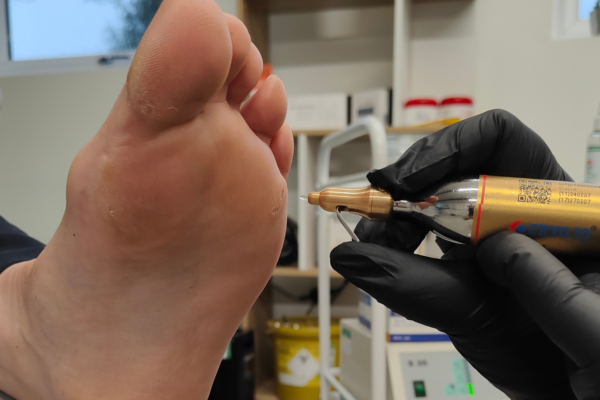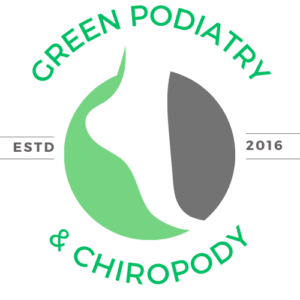What do I need to know about my Verruca?
Verrucae are a notorious source of frustration for both Podiatrist and patient due to their unpredictable response to treatment. Some verrucae resolve after a couple of treatments, and some do not respond at all.
The verruca is caused by the HPV virus which is contagious through contact with a contaminated surface. They are harmless but can be uncomfortable or painful, especially if they develop in any weight-bearing area on the foot.
The evidence suggests that in many cases Verrucae will disappear of their own accord, without treatment. This is because the body’s immune system has located the virus and is fighting the infection. If it is painless, you may opt to leave it alone.
If it is painful or it is causing embarrassment, there are many treatments to choose from. Treatment will be based on size, location and appearance of the Verruca alongside the condition of your skin and medical status. We will discuss over the counter alongside in-clinic treatments that include acid treatments, cryotherapy and Falknor’s Needling.
Acid treatments:
As Podiatrists, we have access to multiple acids with different actions. All of which create a local injury to the area to recruit the body’s own immune system to target the verruca.
Cryotherapy:
Cryotherapy means ‘cold therapy’, a treatment where a cold, freezing spray is directed at a Verruca. A commonly used treatment for the treatment of the virus used by Podiatrists, Nurses, Doctors and Dermatologists for decades. It works by creating a local injury to the site in attempt to recruit your own immune system to fight the virus. The application only usually lasts a couple of seconds and is usually well tolerated, and you can return to activity immediately afterwards. It often requires multiple treatments, and we don’t usually recommend on very large areas of Verruca and may recommend Falknor’s needling in that case
Falknor’s Needling:
An evidence-based treatment for small singular Verruca to large clusters. The treatment is completed after a local injection to numb the area and the Verruca is repeatedly punctured with a fine needle to ‘break-down’ the Verruca and encourage an immune response. Can be used as a one-off treatment, and if successful the Verruca usually clears within 12 weeks. I unsuccessful, the treatment can be repeated.
Following your treatment, you will have to change a small dressing for a few days and the area may feel a little bruised and sore. You can return to daily activities the following day, although we may request you do not undertake strenuous activity until your first review appointment which will usually take places within around 7 days.


